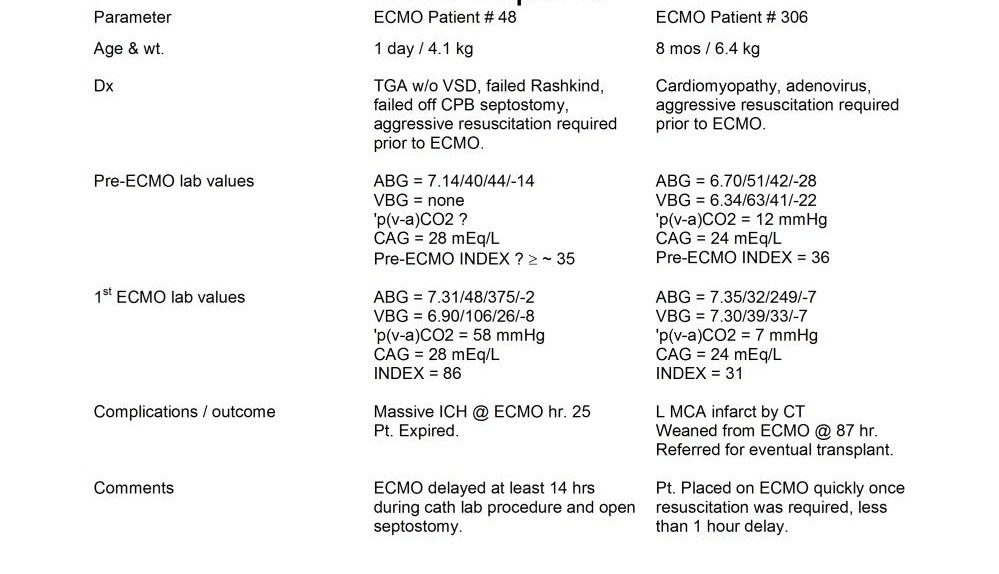
These 2 case reports demonstrate how the Viability Index (VI) can be useful in the acute setting. In case #48, an infant with transposition of the great arteries failed both a balloon atrial septostomy and an off CPB septectomy. The patient required very aggressive resuscitation prior to being placed on ECMO. Just prior to ECMO, an ABG was performed showing a normal paCO2. The corrected anion gap was 28 mEq/L. In hindsight, scoring the patient before the attempted atrial septostomy and septectomy might have indicated the need for ECMO 14 hours earlier. But because of the delay, the first VI score on ECMO was 86, meaning that the patient was going to die of a reperfusion injury complication.
In case #306, a child with cardiomyopathy required very aggressive resuscitation prior to being placed on ECMO. However, there was just a 1 hour delay from the start of resuscitation to implementation of ECMO. The p[v-a]CO2 prior to ECMO indicated adequate resuscitation efforts but poor tissue oxygenation (a high corrected anion gap). Once on ECMO the first Viability Index score was 31. The risk of a reperfusion injury was elevated and manifested itself as a left middle cerebral artery infarct. This was detected after the patient successfully weaned from ECMO and survived to hospital discharge functionally intact.

Perfusion Theory is an educational platform for the Oxygen Pressure Field Theory (OPFT). August Krogh’s theoretical concept of the oxygen pressure field is explained and then applied to clinical applications in perfusion practice.